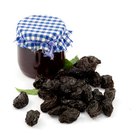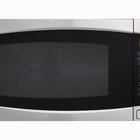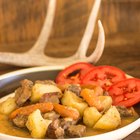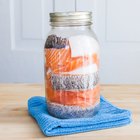Using a pressure cooker kills the harmful bacteria in food, particularly low-acid canned goods like carrots. The system works very simply. When you seal the cooking pot and bring the water to a boil, the steam inside creates building pressure. The pressure, in turn, yields shorter cooking times at higher cooking temperatures that kill micro-organisms known for illnesses like botulism. With a little know-how you can use your pressure cooker safely and effectively to preserve all manner of foods for your household.
Familiarize yourself with your pressure cooker. Read over the manufacturer’s instructions and follow them for assembling the pot and lid. As you do, check the lid’s gasket. It should fit tightly and show no signs of gaps. Also, ensure the vent hole in the lid is clear of any debris by inserting a plastic toothpick.
Assemble your jars and lids. Inspect the jars, looking for any cracks or chips. Damaged jars are not suitable for canning. Always use new lids for your jars. Wash everything in soap and water, then rinse with boiling water to make them as clean as possible. Dry before using.
Fill the jars following your recipe’s directions. Wipe the rim with a clean towel, then place the lids on top. Tighten the lid ring and set the jars aside while you prepare the pressure cooker.
Put the cooking pot in the middle of the stove’s largest burner with the canning rack in the bottom. Fill it with water, again following the recipe’s direction. As a general rule, the longer the suggested processing time, the more water you need. If you’ve filled the canning jars with cold food, preheat the cooker to 140 degrees F. For hot food, heat the water to 180 degrees F..
Put the jars onto the canning rack carefully, keeping them upright. Set the pressure cooker’s lid on top so it locks in, and turn up the heat on the burner. When steam comes out of the vent on the top of the lid consistently for 10 minutes, put the gauge in place. Watch the gauge, waiting to see when the system reaches the recommended pressure. Adjust the heat to keep that pressure as consistent as possible. Leave the system at that pressure for the full time suggested by USDA standards for safe canning.
Turn off the heat and let the system depressurize. When it the gauge reaches zero, leave the pot sealed for 10 minutes more before removing the lid. Lift the jars out of the pot using the rack handle or jar tongs. Set the jars upright on a flat towel leaving 1 to 2 inches of space in between them.
Check the center of each jar’s lid once they cool. It should not pop back when pressed. Refrigerate any jars that don’t seal properly. Label the rest with the date and product for storage.
Related Articles

Problems With Black on Canning Jar Rim

How to Can Jelly Using a Pressure Canner

How to Convert Stovetop Recipes to ...

How Long to Cook Canned Salmon in a ...
How to Heat Process Mason Jars to Seal

How to Can Pork Tenderloin in Half Pint ...

How to Can With Half-Pint Jars

How to Can Venison Meat

How to Put Together a Cuisinart Blender

How to Pressure Can Trout

How to Can Homemade Vegetable Beef Soup

How to Can Salmon Fish

How to Use Citric Acid in Canning

How to Cook Beans in a Pressure Cooker
How Long Can Food Stored in Canning ...
How to Preserve Salsa Made With Canned ...

How to Use a Probe Cooking Thermometer

How to Preserve Pimentos

Why Do Canning Jars Pop While Cooling?

How to Marinate Meat With a FoodSaver
References
Writer Bio
Patricia Telesco has been a writer since 1992. She has produced more than 60 books with publishers that include HarperCollins and Simon & Schuster. Her articles have appeared in "Woman's World" and "National Geographic Today." Telesco holds a Bachelor of Arts in English from the University of Buffalo.